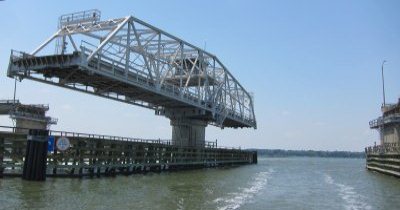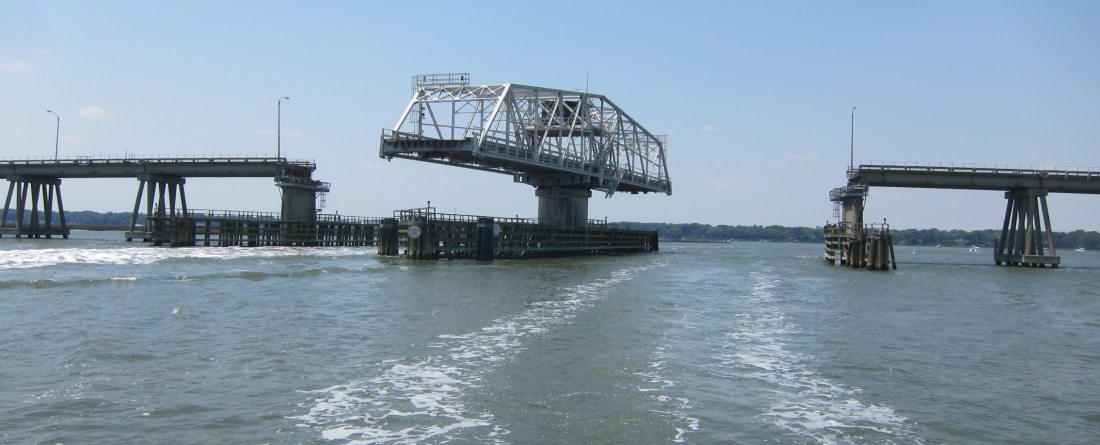To Toogoodoo

|
En Route to
Toogoodoo
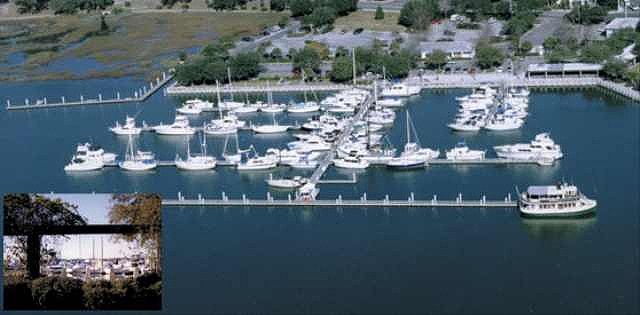 Well what a start to the day. We were on the left, inner long pontoon (front of picture, just about where the tree on the right of the inset picture is), a motor boat in front, a huge one behind us and a smaller one behind that. The current through the Beaufort Marina is well documented. I had at first thought to pivot off the dock, bow-thrust hard left and gun it out of the marina. No. The current was far too brutal and the dock master said even a massive engine could not do it. Back to blogging and chores whilst we wait for slack tide at 13:30, a good chance to do some catching up. CRASH. The boat beside us on the other side of the pontoon was crashed into by his neighbour attempting to leave and clearly not. The sound is just like at a car crash when you hear that crunching noise, the only difference is you don't hear the tinkling of indicator glass. We stuck our heads up like meercats - our neighbour OK as he was hit on his stern platform, the boat that struck had a fist sized hole a foot above the water line. The sound always makes me feel slightly sick, I was so pleased we had listened to the dock master. Mumbling about getting back to writing blogs; I returned to my hidey-hole a stiff drink in hand. SCREAM. CRASH. The man who had been hit had tried to leave and he repeated what had happened to him an hour before. Bear told me the man had had a good plan but as he let his stern line go, the chap had waited a beat before gunning it. No visible damage this time but I had to return yet again to my hidey-hole with yet another larger stiff one. Meantime the two boats behind us managed to get off safely, albeit very fast as they had learned from the others. I was worried someone may pull in, and after the two crunches, I could do with an easy exit. So with the dock master holding Beez nose, me gunning backwards, Bear and another chap feeding the back line along from cleat to cleat - ten minutes later we were at the very end of the pontoon, ready to go as soon as it was safe to do so.
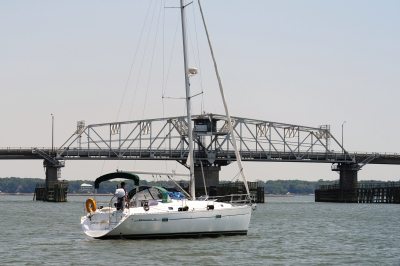 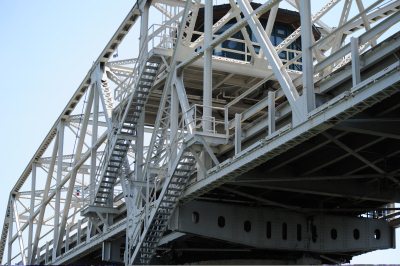
At one o'clock we fell back with the tide and pulled away neatly and onward to the rather attractive Ladys Island or often just called Woods Hole Swing Bridge (another first for us), which was built in 1960. As today is Sunday, opening is on demand. A very nice lady did the honours and wished us a good day, we waited quietly behind Santiago with three power boats behind us. Passing through we saw the complex steelwork of the structure.
A swing bridge is a movable bridge that has as its primary structural support a vertical locating pin and support ring, usually at or near to its center of gravity, about which the turning span can then pivot horizontally. Small swing bridges as found over canals may be pivoted only at one end, opening as would a gate, but require substantial underground structure to support the pivot. 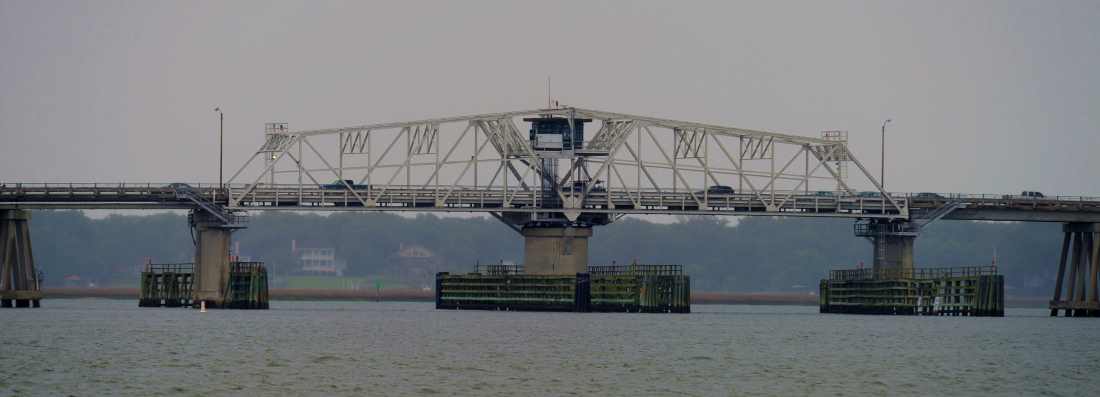 In its closed position, this swing bridge carries cars, (there are some
carrying a railway over a river
or canal).
When a water vessel needs to pass the bridge, road traffic is stopped (usually
by traffic signals and barriers), and then motors rotate the bridge
approximately 90 degrees horizontally about its pivot
point. Advantages: As this type requires no counterweights the complete weight is
significantly reduced as compared to other moveable bridges. Where sufficient channel is available to have individual traffic
directions on each side the likelihood of vessel-to-vessel collisions is
reduced. The central support is often mounted upon a berm along the axis of the
watercourse, intended to protect the bridge from watercraft collisions when it
is opened. This artificial island forms an excellent construction area for
building the movable span
as the construction will not impede channel traffic. Disadvantages: For a symmetrical bridge the central pier forms a hazard to navigation. Asymmetrical bridges may place the pivot near one side of the channel. Where a wide channel is not available a large portion of the bridge may be over an area that would be easily spanned by other means. A wide channel will be reduced by the center pivot and foundation. When open, the bridge will have to maintain its own weight as a balanced double cantilever, while when closed and in use for traffic the live loads will be distributed as in a pair of conventional truss bridges, which may require additional stiffness in some members whose loading will be alternately in compression or tension. If struck from the water near the edge of the span, it may rotate enough to cause safety problems (Big Bayou Canot train disaster was the derailing of an Amtrak train on the CSXT Big Bayou Canot bridge in northeast Mobile, Alabama, killing 47 and injuring 103, on the 22nd of September 1993).
 I'm pleased to report that the thirty one mile journey to anchor in Toogoodoo went smoothly and without event
Just before we anchored off the wider part of the river - a quiet Sunday afternoon picture
Could have been lovely here, with this pretty sky, but the no-see-ums were troublsome to say the least
ALL IN ALL
A SHAKY START, ONE HECK OF A MECCANO SET AND PEACE WHILST BEING
BITTEN |
